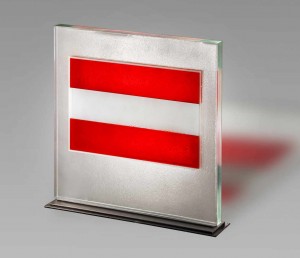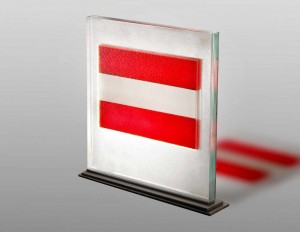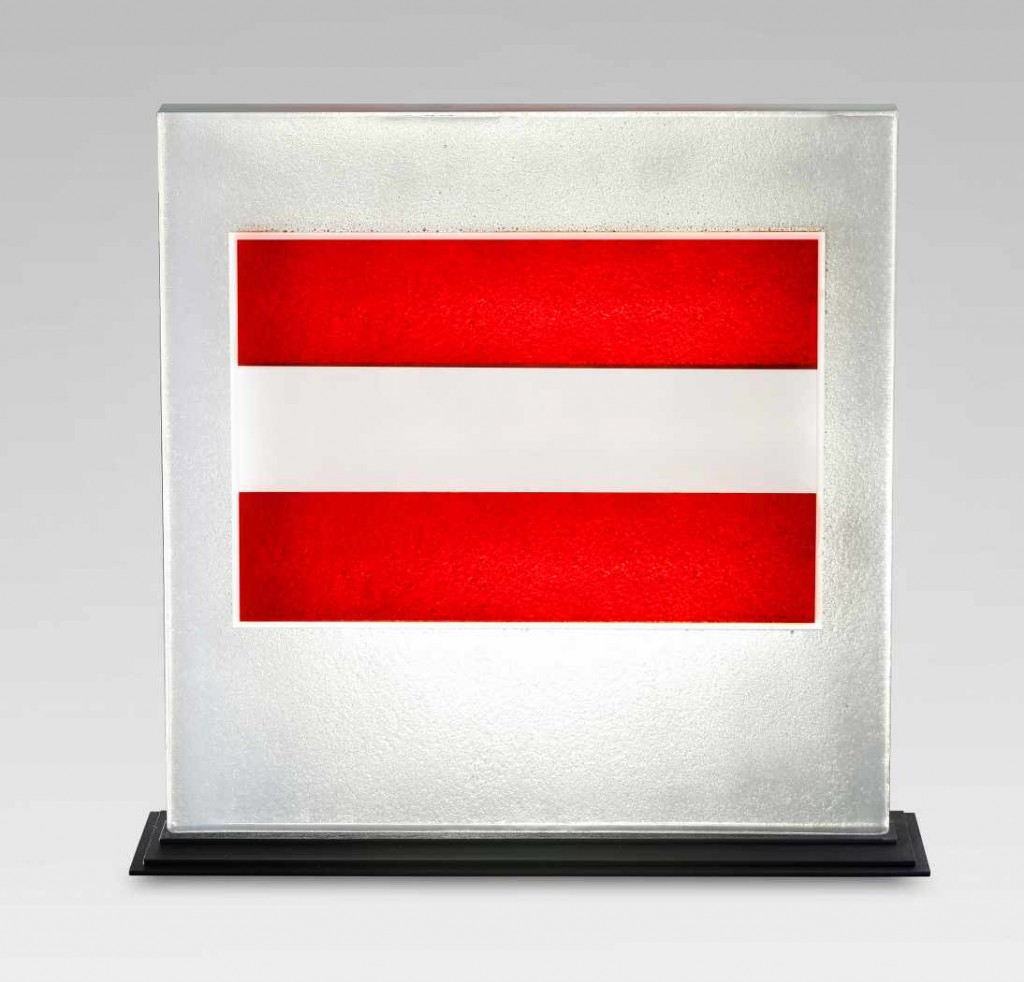 Returnthe 2011 summary
Returnthe 2011 summary
 Work available
Work available
Austria
2011
50 x 50 x 3.6 cm. 28 kg - glass merged in multilayer with inclusion of pigments
![]()
According to legend, the Austrian flag dates back to the First Crusade in 1191.
During a glorious combat, the Duke of Babenberg, Leopold V, is said to have slaughtered so many enemies that his tunic was covered in blood, except at the level of the belt which had preserved a large white band. He took off his tunic and placed it on his spear as a banner, to rally his troops.
The three horizontal bands of red-white-red were adopted in 1786, at the time of the creation of the Austria-Hungary "dual monarchy", or Austro-Hungarian Empire, consisting of the Empire of Austria and the Kingdom of Hungary, united by the Habsburg-Lorraine family during the reign of Francis Joseph I.
Par la suite la bande blanche fut chargée de divers insignes et emblèmes au gré des époques et des différents changements politiques. Au moment de la naissance de la première république d’Autriche en 1915, quand l’empire des Habsbourg fit place à une république, seules les trois bandes furent choisies comme emblème national.
Click on the images to zoom
Enfin, elles réapparaîtront définitivement le 1er mai 1945, après la période de rattachement à l’Allemagne (1938-1945),
au cours de laquelle l’Autriche avait remplacé son drapeau par une croix gammée.
Official name: Republic of Austria
Continent: Europe | Capitale : Vienne
Area: 83 858 km2 | Population (2011) : 8 217 280 habitants
Official language: allemand | Monnaie : euro
Border countries: Germany, Hungary, Italy, Liechtenstein, Slovakia, Slovenia, Czech Republic
National holiday: October 26
Member of the United Nations: December 14, 1945
Member of the UNESCO: August 13, 1948



